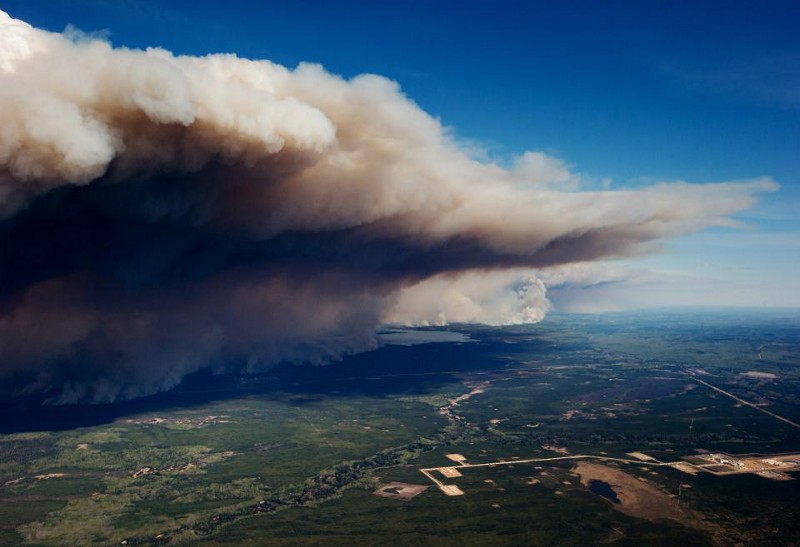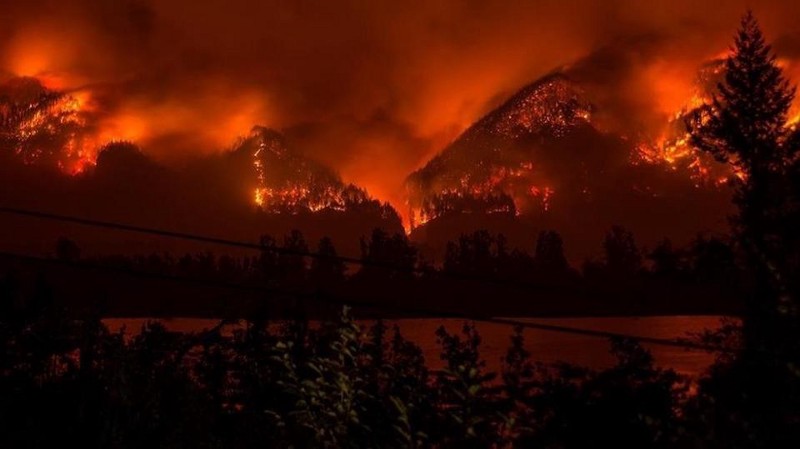Why slime is the perfect protection against wildfires

- Water is a naturally talented firefighting agent, but it runs off of walls and evaporates quickly in drier climates (where wildfires tend to be).
- Foam can solve the problems of running and evaporating, but it lacks a beefy thermal capacity.
- Gels or slimes combine the best of water and foam.
If someone yells ‘fire!’ in a crowded wood, what’s the first thing you’re going to look for? Water is the classic enemy of flame. In many cases, H2O is indeed the way to go. But for fighting forest-fire infernos, water has some unfortunate flaws. These drawbacks may be solved by shelving the simple solution and instead slinging sticky slime.
Water cuts off oxygen and is easy to spray. It also takes a lot of heat.
Water’s firefighting forte begins with being good at the simple stuff. It’s naturally abundant in many places. Where it’s scarcer, we’ve generally figured out how to pipe in more from elsewhere. It has the useful fluid quality of being able to be routed through pipes and hoses and sprayed out under pressure. Helicopters can suck or dredge it from lakes, fly it to the fire, and dump it. Rinse and repeat. Water is easy to come by and apply. It’s also cheap and environmentally friendly.
While we often picture it cutting off oxygen, directly drowning flame, water has another useful chemical property for firefighting. The specific heat capacity of a substance is how many joules of energy are required to heat one gram of that substance by one kelvin. (For the imperially inclined, the unit is British Thermal Units per pound per degree Fahrenheit.) The greater the specific heat capacity of a substance, the more energy it can absorb before rising in temperature. It so happens that water has the largest specific heat capacity of any practical substance.
Thus, water can absorb an exceptional amount of heat from the burning material, cooling the burn. This — along with its liquid ambient state and reasonable density and thermal conductivity — is why industrial equipment, electronics, and computers are often designed to be cooled by water. If you’re pouring something directly onto open flame, water is a great choice. However, if you’re trying to protect a building from advancing flame, water has a couple of substantial drawbacks.
Water runs off of surfaces and evaporates relatively quickly in drier climates (where wildfires tend to be)
Water is good at confronting fire, but it doesn’t stick around to fight for very long. With its modest viscosity, when up against a wall it tends to hit the dirt. It also evaporates quickly into the atmosphere under dry conditions. This is especially true when it’s sprayed onto a vertical wall, facing a wildfire borne on a fast, dry wind, smashing through desiccated pines, driving everyone out ahead of its advance.
Foam can solve the problem of running and evaporating, but it lacks a beefy thermal capacity
Firefighting foams soothe the issue of surface runoff. Foam can be sprayed onto walls and it will stick in place. The frothy coating blocks oxygen from reaching the flammable surface, and resists the pull of gravity.
However, it can only take so much heat. The bubbles within the foam are full of gas, essentially little pockets of air. Air has a lower specific heat capacity than water. What’s more, the mass of air that fills a bubble is vastly less than the mass of water that could fill that bubble. Let’s briefly switch to volumetric heat capacity, the measure of how much heat can be absorbed by a certain volume, rather than mass, of material. One cubic centimeter (cc) of liquid water can absorb roughly 3,500 times more heat than one cc of air. Once again simple water is exceptional: it has the greatest volumetric heat capacity of any common material.
Foams still find use in fighting certain kinds of blazes like oil fires. However, many foam formulations are facing increased regulatory scrutiny over environmental and health concerns.
Slimes or gels solve this by spraying on, sticking, blocking oxygen, and holding in place a high volume of water to absorb heat.
Fire-retardant gels, such as the STRONG WATER slime shown in Freethink’s recent video, combine the advantages of water with those of foams.
The structural nature of the compound, tacky and sluggish, prevents it from abandoning the walls to which it is applied. Gels also use their sticky viscosity to trap in bubbles. The advantage of the gel is that the bubbles are filled with water. That water not only cuts off oxygen, but absorbs vastly more heat from the fire before its temperature rises too high, shielding the underlying structure. Spraying slime onto the walls of a home could save it from the advance of a raging wildfire.
According to the STRONG WATER website, their new firefighting slime can be applied by equipment made for spraying water, with minimal accessories, and has a gentler chemical formulation to ease regulatory concerns. Chemically superior and apparently practical, firefighting slime can harness the many strengths of good old water, while using chemistry to mitigate its shortcomings.





